MissionVet Specialty & Emergency
Minimally Invasive
Minimally invasive surgery (MIS) is an exciting facet of surgery that allows for less pain and a faster return to comfort for your pet. For MIS, we create small incisions through the skin to allow for access to the surgery site through skin ‘portals’. Through these portals, we can insert a small camera into different body cavities including the abdomen, chest, and even joints. Though small incisions give a small working area, we are able to work with a magnified high-definition image that can often make the surgery easier and allow us to find problems that we might miss with regular open surgery. Additional portals can easily be created to allow the surgeon to utilize specialized instruments to perform different procedures. The smaller incisions often allow for a faster recovery with less post-operative pain and a smaller incision for your pet.
Laparoscopy
Laparoscopy involves surgery with a small camera and scope placed in the abdomen. Laparoscopic surgeries include ovariectomy and liver biopsies.
Laparoscopy - assisted surgery
Laparoscopy-assisted surgery allows for small incisions into the abdominal wall (2-3 inches) to provide for easier access to abdominal organs without performing a full open approach. Laparoscopy-assisted surgeries include gastropexies (attachment of the stomach to the body wall for prevention of gastric dilatation and volvulus (GDV or ‘twisted stomach’) and ovariohysterectomies (spays).
Thoracosopy
Thoracoscopy is like laparoscopy but allows for visualization and manipulation of organs in the chest. Thoracoscopic surgeries include biopsies of the lung and removal of the pericardium (sac surrounding the heart).
Arthoscopy
Arthroscopy utilizes a camera in joints with small portals for the placement of instruments. Arthroscopy can be used for the treatment of ACL and meniscal tears as well as elbow dysplasia.
Minimally Invasive FAQS
Does minimally invasive surgery cost more?
The simple answer is “yes, it does”. The specialized equipment cost, equipment maintenance, and disposable materials do add a significant cost to each procedure. However, we strongly feel that it is so important to provide the highest quality of care for our patients that we do not pass this cost along to you.
Why minimally surgery?
As with the human surgical field, there is a growing trend in veterinary medicine to perform surgery in a minimally invasive manner. The popularity of minimally invasive surgery, or MIS, is due to the much smaller incisions that are needed; smaller incisions translate to less discomfort for your pet with a faster return to activity. Another big advantage is the increased visualization that can be achieved with MIS. Though the cameras are small, the images are projected on a large HD screen. Because the cameras are fitted with high-intensity xenon or halogen fiberoptic lights, visualization and magnification of the surgical site can be superior to conventional open surgery. Lastly, some procedures can be performed more quickly because of the decrease in time needed to close incisions.
Does it matter how big my pet is to have MIS?
Minimally invasive surgery can be performed in almost any size animal. Small puppies and kittens (less than 4 pounds) can be more difficult as there may not be enough room for the camera.
How long does it take to recover from surgery?
The recovery time after surgery depends on what procedure was performed. Usually, your pet will be able to go home the next day; sometimes they can even go home the same day as surgery! We usually recommend 10 days of rest after surgery – though your pet often feels back to normal within the first day or two because the incision is so small. They will still have an incision that needs to heal and this general takes 7-10 days.
Are there risks or disadvantages to MIS?
The biggest risk of MIS is accidental puncture of the spleen during the introduction of instruments into the abdomen. This can result in bleeding which is usually self-limiting; conversion to an open procedure is rare. We monitor patients very closely with all surgeries we perform, but with MIS, we pay particular attention to respiration as well as fill the abdomen or chest with air while performing surgery. Because of this, we breathe for your pet so complications are rare.
The biggest disadvantage to MIS is that it can cost more to perform than conventional open surgery. The extra cost is due to the extra specialized equipment and training that is needed to perform the surgery. The cost is offset by decreased invasiveness and increased comfort to your pet, just as with human surgery.
Why do you recommend just ovary removal over ovary and uterus removal for sterilization with MIS?
Traditional spays in the United States are performed by removing both the ovaries and the uterus (also called ovariohysterectomy or OVH) of a female dog resulting in sterilization. Ovariectomy (or OVE) is the removal of just the ovaries and is commonly done in European countries to sterilize female dogs and cats. While we commonly remove the uterus with conventional ‘open’ spays, it is much easier and faster and allows for a much smaller incision to remove only the ovaries with minimally invasive surgery. Numerous studies have shown that there is no increased risk of problems (such as pyometra or endometritis) if the uterus is left behind as ovary removal takes away all hormones that cause these problems.

